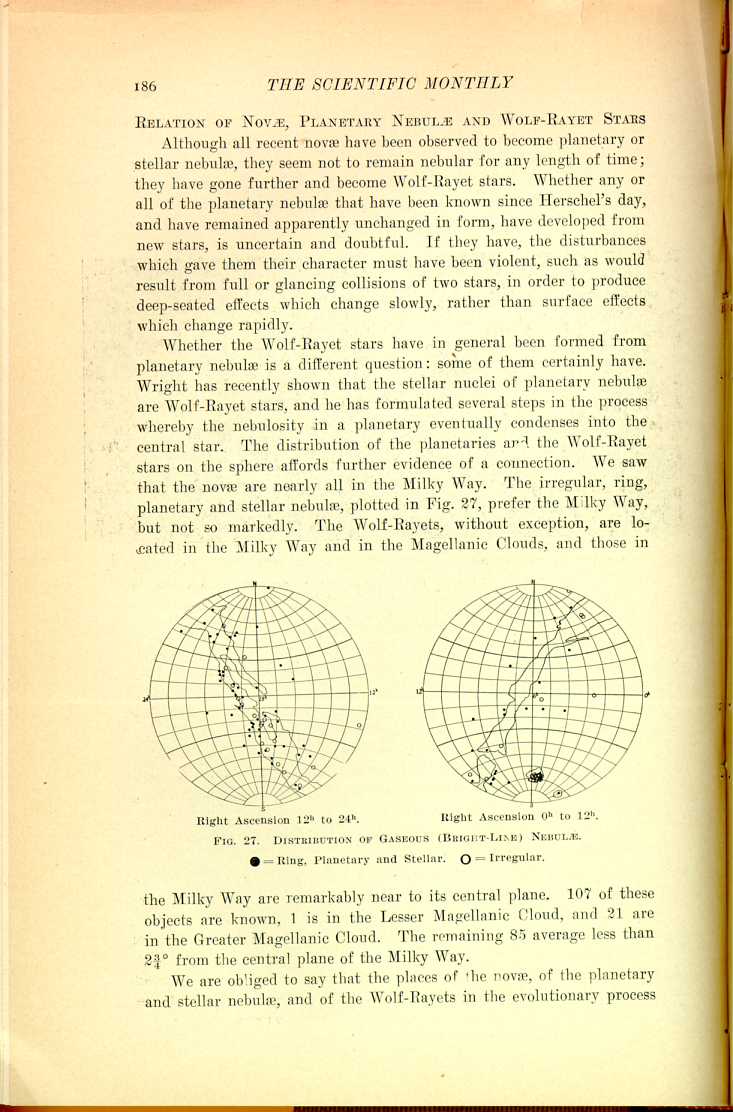| The Scientific Monthly | ||
RELATION OF NOVÆ, PLANETARY NEBULÆ AND WOLF-RAYET STARS
Although all recent novæ have been observed to become planetary or stellar nebulæ, they seem not to remain nebular for any length of time; they have gone further and become Wolf-Rayet stars. Whether any or all of the planetary nebulæ that have been known since Herschel's day, and have remained apparently unchanged in form, have developed from new stars, is uncertain and doubtful. If they have, the disturbances which gave them their character must have been violent, such as would result from full or glancing collisions of two stars, in order to produce deep-seated effects which change slowly, rather than surface effects which change rapidly.
Whether the Wolf-Rayet stars have in general been formed from
planetary nebulæ is a different question: some of them certainly have.
Wright has recently shown that the stellar nuclei of planetary nebulæ
are Wolf-Rayet stars, and he has formulated several steps in the process
whereby the nebulosity in a planetary eventually condenses into the
central star. The distribution of the planetaries and the Wolf-Rayet
stars on the sphere affords further evidence of a connection. We saw.
that the novæ are nearly all in the Milky Way. The irregular, ring,
planetary and stellar nebulæ, plotted in Fig. 27, prefer the Milky Way,
but not so markedly. The Wolf-Rayets, without exception, are located
in the Milky Way and in the Magellanic Clouds, and those in

FIG. 27. DISTRIBUTION OF GASEOUS (BRIGHT-LINE) NEBULÆ.
[Description: Illustration of two globe-like spatial maps that indicate the
distribution of gaseous nebulæ.]
Solid circles = Ring, Planetary and Stellar. Open circles = Irregular.
We are obliged to say that the places of the novæ, of the planetary and stellar nebulæ, and of the Wolf-Rayets in the evolutionary process
If the planetaries have been formed from novæ, especially the novæ which encountered the fiercest resistance, the high velocities are in a sense not surprising, for those stars which travel with abnormally high speeds are the ones whose chances for collisions with resisting media are best; and, further, the higher the speeds of collision the more violent the disturbance. This line of argument also leads to the conclusion that the novæ, planetaries and Wolf-Rayets belong not in general before the helium stars, but to another generation of stars. They may, and I think will, develop into a small class of helium stars having special characteristics; for example, high velocities.
| The Scientific Monthly | ||